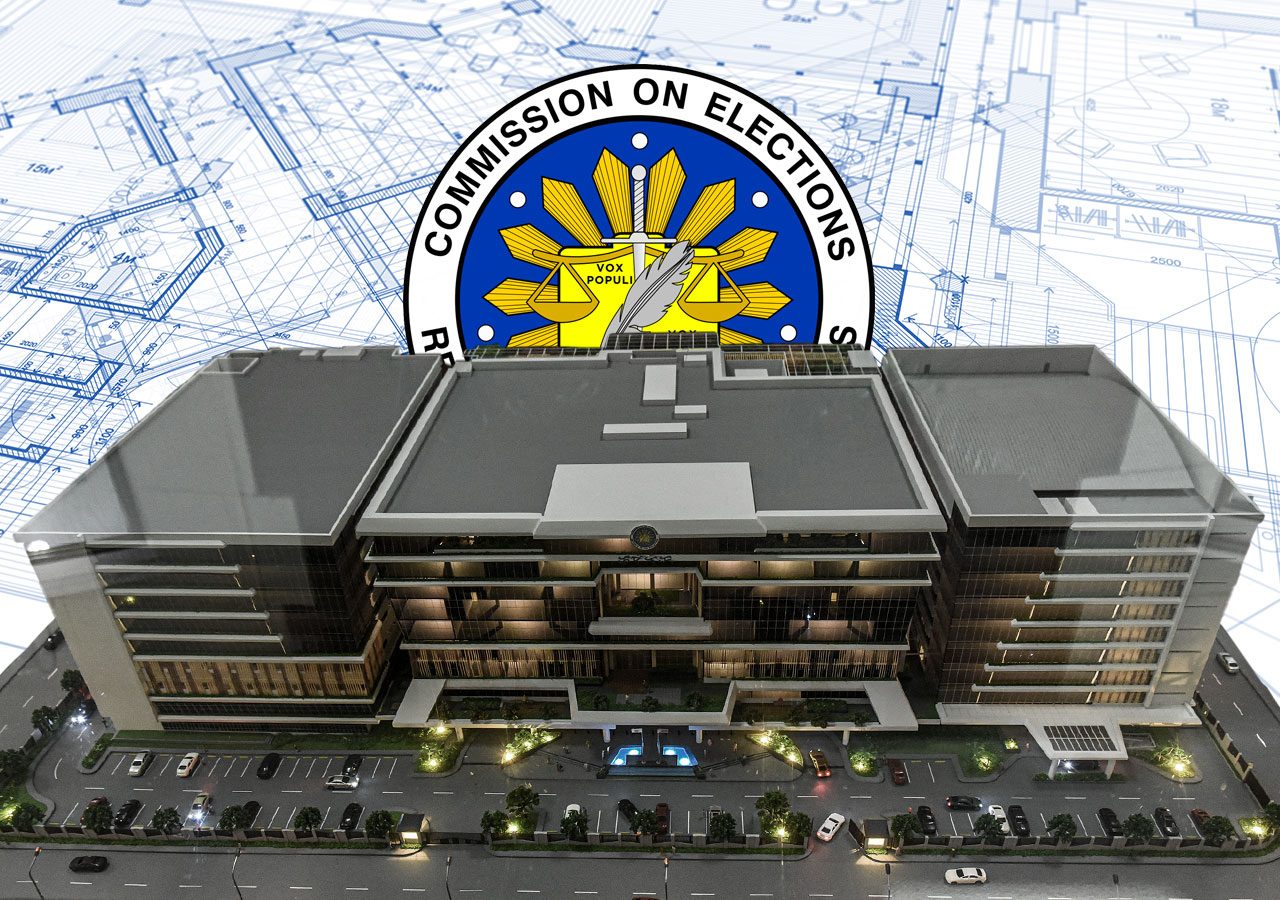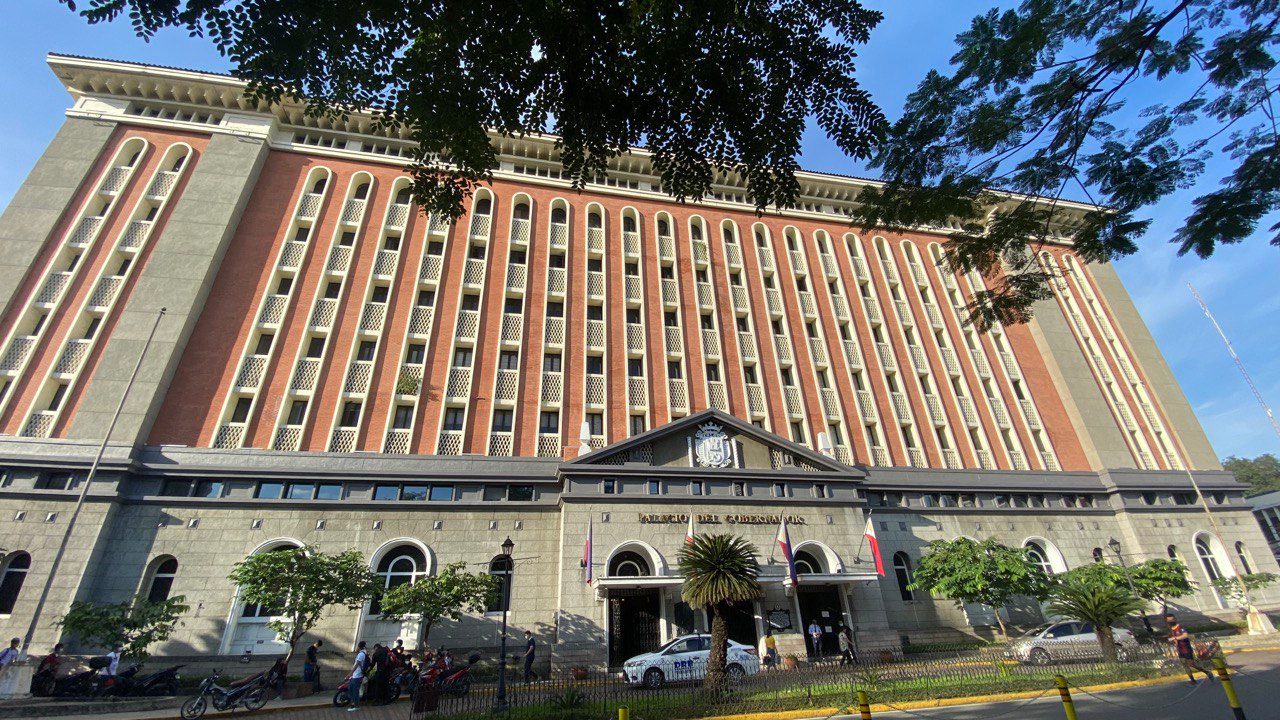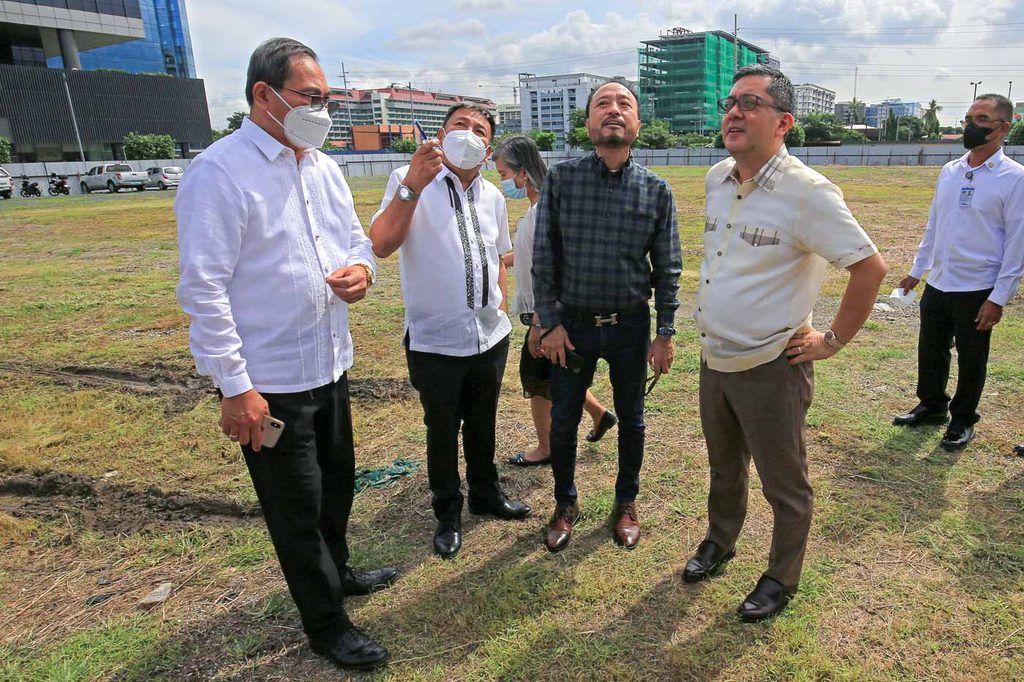SUMMARY
This is AI generated summarization, which may have errors. For context, always refer to the full article.

READ: Part 1 | The sorry state of Comelec offices: Crowded, rented, worn-out
MANILA, Philippines – Sometime in late 2017 to early 2018, the Commission on Elections (Comelec) under the leadership of then-acting chairman Christian Robert Lim received a letter from the Office of the President (OP).
Malacañang’s order: vacate the offices in Palacio del Gobernador immediately.
Palacio is where the Comelec rents most of its main offices from the Office of the President. Not only do Comelec en banc officials and hundreds of employees carry out operations there, it is also where they keep servers that store crucial election-related data.
Without a lot of options, the Comelec did the best it could: beg.
“We had to go to the OP to meet with then-executive secretary Salvador Medialdea. I was joined by then-chairman nominee Sheriff Abas to plead that we be allowed to stay for one more year, so we can find ways,” Lim told Rappler. “Our problem is: where will we transfer office? We don’t want to go out of the Intramuros area because our other offices are also there.”
Abas also remembers the meeting vividly.
“They said the OP was running out of offices, and they intended to put the Presidential Anti-Graft Commission in Palacio,” Abas said. “In fairness to ES Medialdea, he granted our request for extension. First, it was two years. After that, he just allowed us to stay longer, up to this day.”
It was a crisis averted, but it renewed conversation among top Comelec officials at the time about the need to have a building of their own.
“I told them, we should be ready, because if they’re serious that they want us out of Palacio, it would look ugly that the Comelec is involved in a landlord-tenant issue,” former poll commissioner Luie Guia said.

Issue of independence
Rappler spoke to a total of nine former and present Comelec officials and employees for this two-part series, and not one of them failed to mention that out of all constitutional offices in the Philippines, only the election body remains without its own building.
They said it hampers the Comelec’s efforts to be perceived as independent.
“The Office of the President owns Palacio del Gobernador, and you’re using it for free. What if tomorrow, they have decided they hate the chairman? That’s just usufruct, there’s no long-term contract for that. It’s as if ‘you’re staying there as it pleases us.’ You’re literally at their mercy,” Lim said.
“From the perspective of independence, how can you claim that you have independence from the rest of the branches of government if you are merely renting from the executive?” asked Emil Marañon III, seasoned election lawyer and chief of staff of the late former Comelec chairman Sixto Brillantes Jr.
Forever dream
Guia, who, before becoming poll commissioner, was executive assistant of former Comelec chairman Christian Monsod in the 1990s, said having its own building has been a decades-long dream of the commission. (Editor’s Note: An earlier version of this story referred to Guia as chief of staff of Monsod. This has been corrected.)
“That time, there were talks to transfer the Comelec to another place, either through a purchase of a building or through lease,” he recalled. “I was in the Comelec in 1992, and it was already in the agenda of the Comelec’s formal planning.”
When Brillantes assumed office in 2011, he included the building project in the goals of his administration. The Comelec in 2012 bought a lot in Pasay worth P1 billion.

The next step was financing the building complex itself. That’s how veteran election lawyer and former justice secretary Alberto Agra came into the picture.
Brillantes tapped Agra, his close friend, to give the en banc a lecture about public-private partnerships, which are long-term agreements between the government and private institutions that were popular during the Aquino administration.
“I suggested joint ventures and long-term leases, because the joint venture guidelines did not explicitly include the Comelec,” Agra told Rappler. “I suppose if it’s a lease arrangement, certain floors can be given to the Comelec for its operations.”
“If it’s a joint venture, one building can purely house Comelec offices, and the other office can possibly be commercial, so the Comelec can earn revenues,” Agra added.
Agra submitted a draft framework to the Comelec, and soon after, private firms began sending proposals. However, Brillantes, who was set to retire in February 2015, ran out of time.
“There were proposals and it was just a matter of choosing which was best. Before the final approval, I think it had to go through the process required in the PPP, such as going to the National Economic and Development Authority (NEDA). That’s what was not finished,” Marañon said.
Project ‘shelved’
Lim, who was acting chairman after Brillantes’ retirement, said the latter entrusted the project to him, and told him two firms were shortlisted.
“When he retired, it was already February 2015. We were gearing up for the 2016 elections. In the first week of May 2015, chairman [Andres] Bautista was appointed. But his priority was to prepare for the elections rather than the building. So it was shelved until after the 2016 elections,” Lim recalled.
Bautista, in an interview with Rappler, validated Lim’s recollection of events.
“The focus really was to make sure that the elections happen, and the elections be managed properly,” he said.
After the 2016 elections – one which saw Rodrigo Duterte’s ascent to Malacañang – the Comelec tried to get the funding from the executive branch.
“[We talked] with the Department of Budget and Management (DBM), yes. We were trying to insert money to start the project. But it was not an in-depth dialogue, and it was being done with the budget people in the Comelec,” Bautista said.
But what happened to the PPP path that gained momentum during the Brillantes commission?
“If I recall, the proponents sort of backed out, so we’re back to zero,” Lim said.
The Comelec then referred the project to the Department of Public Works and Highways (DPWH), which in turn, searched for companies that were interested in making a detailed architectural and engineering design for the proposed Comelec building.
The bidding failed twice, Abas said. His administration then decided to take back the project.
Small strides
In 2018, the Comelec opened the bidding for the design of the building, won by Olonan & Associates. The firm’s design was the basis of the miniature scale model presented by the Comelec in August under the leadership of new chairman George Garcia.

Behind the scenes, Abas knew the project would not be finished in time for his retirement in February 2022, but thought that at least he could tick off as many preliminary requirements as possible.
These included approval from the DPWH and the OP. Abas, however, said that the Comelec was unable to get a multiyear contractual authority from NEDA due to the setbacks caused by the pandemic.
“The DBM has what it calls a multiyear contractual authority. You need that certification from DBM so that at least, you will be given funding every year,” Abas said.

Where we are
Here’s the good news for Comelec employees: Garcia has expressed support for this project and he has a good relationship with new DBM chief Amenah Pangandaman.
In fact, Garcia said that right after the Comelec fire, Pangandaman talked to him and specifically asked about the needs of the Comelec in connection with getting out of its aging offices in Palacio del Gobernador.
The result: the executive branch proposed to Congress an initial funding of P500 million to jumpstart the building project.
Garcia is set to face the House appropriations panel on September 9, and his goal is to convince lawmakers not only to keep the line item in next year’s appropriations, but also to increase the initial budget to P2 billion.
Overall, the Comelec needs an estimated P9.3 billion (up from earlier estimated cost of P8.2 billion) to finish the building complex.
“If you’re going to tap a contractor, would you ask for their services with a meager budget? It may not push through. It also puts at a disadvantage those making the plans for the project,” Garcia said.
The veteran election lawyer argued that letting the Comelec erect its own building will save the government money in the future, instead of continuously renting office spaces that cost them P169 million yearly.

Speaking figuratively, Garcia likens his Comelec employees to a Filipino family wanting to have their own home.
“If there’s an American dream, there is also a Filipino dream, to have a roof over your head. A house you could call your own is way different from a house you’re just renting,” he said.

Government employees are sometimes vilified, especially those in the Comelec, in the wake of frustration over the handling of elections, or how polls turn out.
But at the heart of the Comelec are thousands of rank-and-file workers, who, just like the average Filipino, report for work daily, with the mindset that what they are doing matters. Comelec employees’ union president Mac Ramirez guaranteed: they are the first to speak out when irregularities occur and persist.
But he believes, now more than ever, that an ideal work environment for them is long overdue.
“Imagine, the institution in charge of overseeing the election of the country’s leaders – from the president to barangay councilor – does not have its own home,” he said. “The office that protects the country’s sovereignty does not have its own building. It’s time for our own.” – Rappler.com
* All quotes in Filipino were translated into English, and some were shortened for brevity.
Add a comment
How does this make you feel?
There are no comments yet. Add your comment to start the conversation.